Table of Contents Show
The National Park Service (NPS) is one of four federal agencies protecting nearly all federal lands. These agencies do almost anything necessary to ensure that federal lands and resources are available for future generations.
However, despite the best efforts of NPS rangers and officials, some national park units are still in danger.
Today, we’re looking at how some national parks are experiencing potentially fatal symptoms despite being more famous than ever. Let’s dive in and see if there’s hope for our national parks!
What Are National Parks?
National parks are areas of land that the federal government has set aside to maintain and preserve the natural environment. National parks are for historical and scientific research and, in many cases, recreation and enjoyment by the public.
There are 19 designations for national parks, which largely determine legalities and restrictions regarding recreational activities.
Pro Tip: Want to learn more about the different national parks and who runs them? Read Decoding Our National Park System!
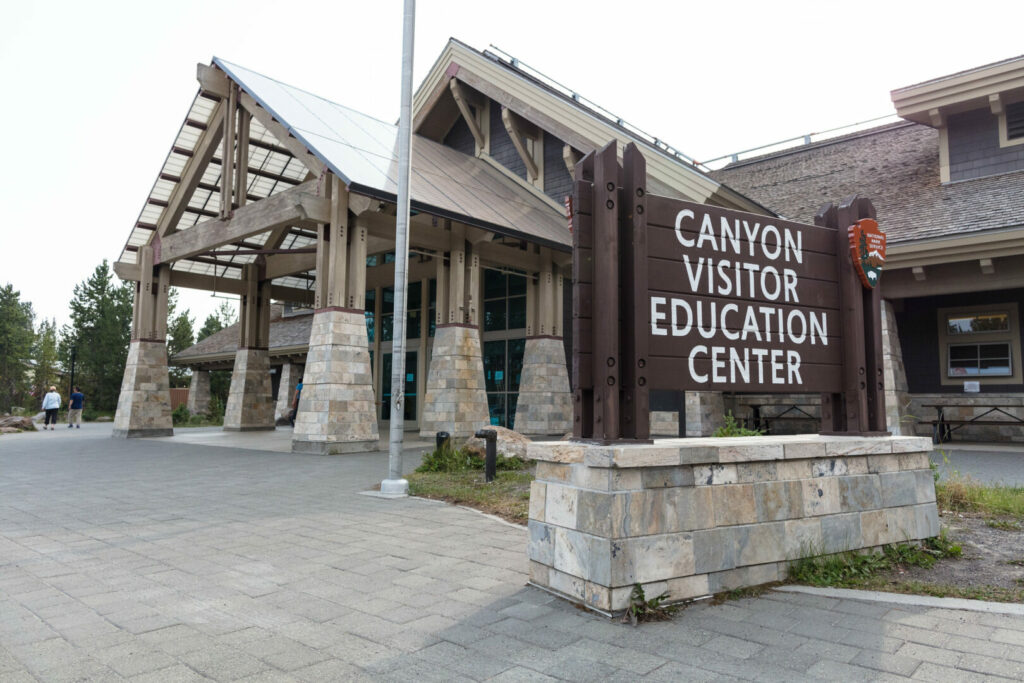
How Many National Parks Are There?
You may have heard that there are 63 national parks, but that’s only partially true. The National Park Service manages more than 400 different units, 63 of which the government designated as national parks.
The more than 400 NPS units combine to make up over 85 million acres of land.
In addition to national parks, the National Park Service is also responsible for national preserves, monuments, recreation areas, seashores, lakeshores, historic parks/sites, parkways, scenic trails, and battlefields.
Download the NPS App on your iOS and Android devices to find your nearest NPS unit.
Why Are National Parks in Trouble?
Rangers and government officials are trying to protect America’s national parks, but it’s a tough job. Several things are making their jobs harder than ever. Let’s find out!
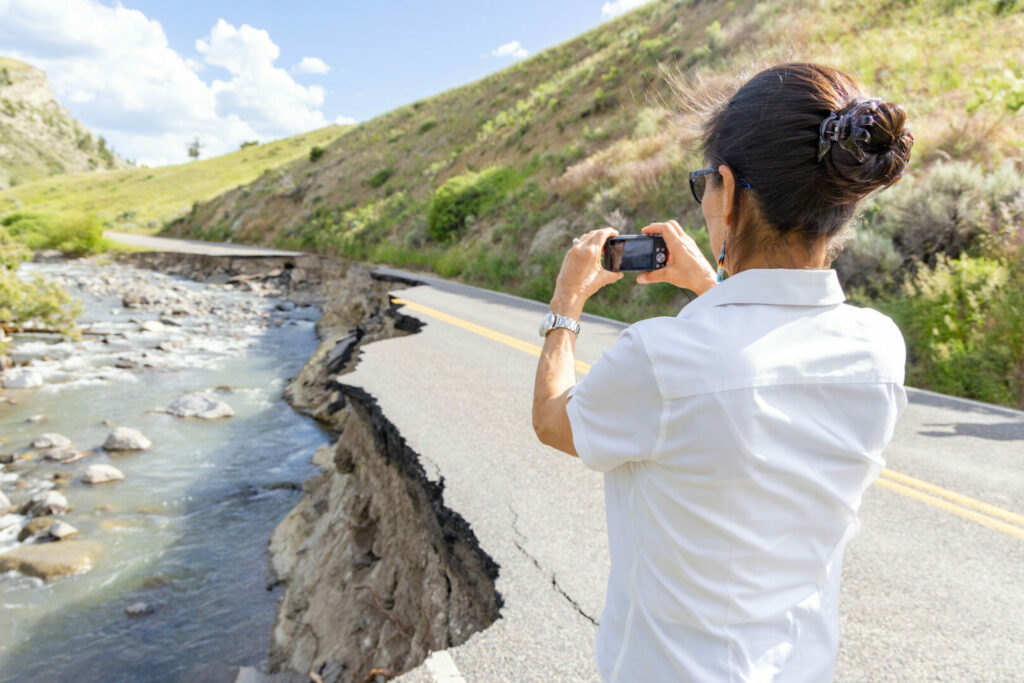
Traffic Jams and Congested Trails
Visitor numbers are off the charts at national parks. Great Smoky Mountains National Park welcomed over 14 million visitors in 2021, more than the population of all but four states (California, Texas, Florida, and New York). That’s a lot of people!
All those people are jamming the roads and trails in and around the parks. Moving from one attraction to another can require you to sit in traffic, increasing air pollution.
Once you arrive at the following location, finding a parking spot is challenging in many places. There’s a chance you’ll circle the parking lot, wasting more gas and creating more pollution while looking for a space.
For those lucky enough to find a parking spot near a trailhead, don’t expect to enjoy your hike in silence. Hordes of park visitors are packing some of the most popular trails and creating a stir.
We love hiking to enjoy a great view, but loud and inconsiderate tourists are killing the vibe.
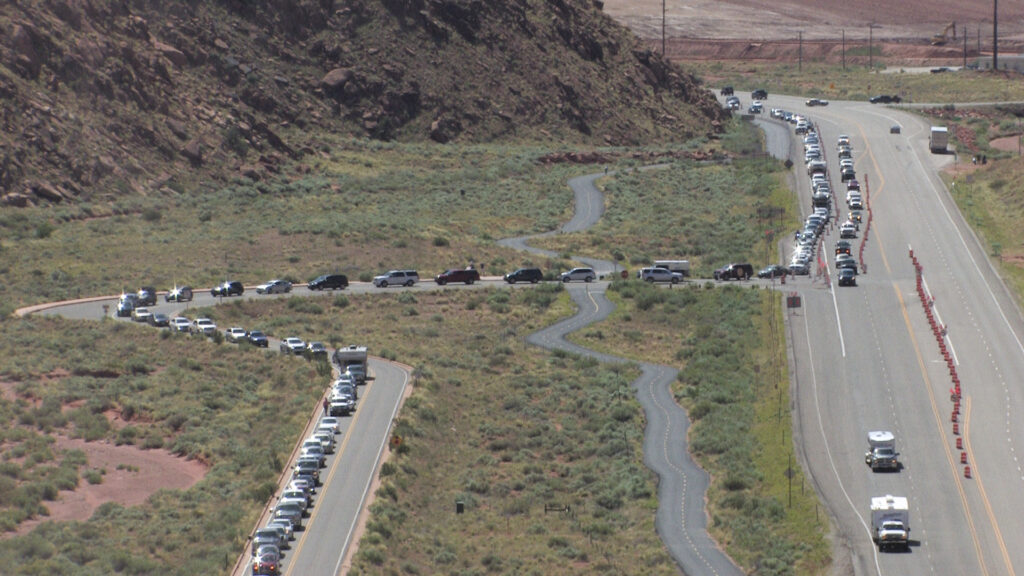
Guests Creating New Paths
We see many guests creating new paths along popular trails due to a lack of patience or simple rudeness. They destroy vegetation and disturb the landscape to create a new route and spread the congestion of hikers.
The damage is already present when park officials discover these new paths.
Park officials typically waste their time, energy, and resources constructing barriers to prevent future visitors from wandering the paths. It can take years for vegetation to heal, but some destruction causes permanent damage to the land.
Pro Tip: If you’re looking for a less popular park to visit, check out the 5 Least Visited National Parks in the U.S.
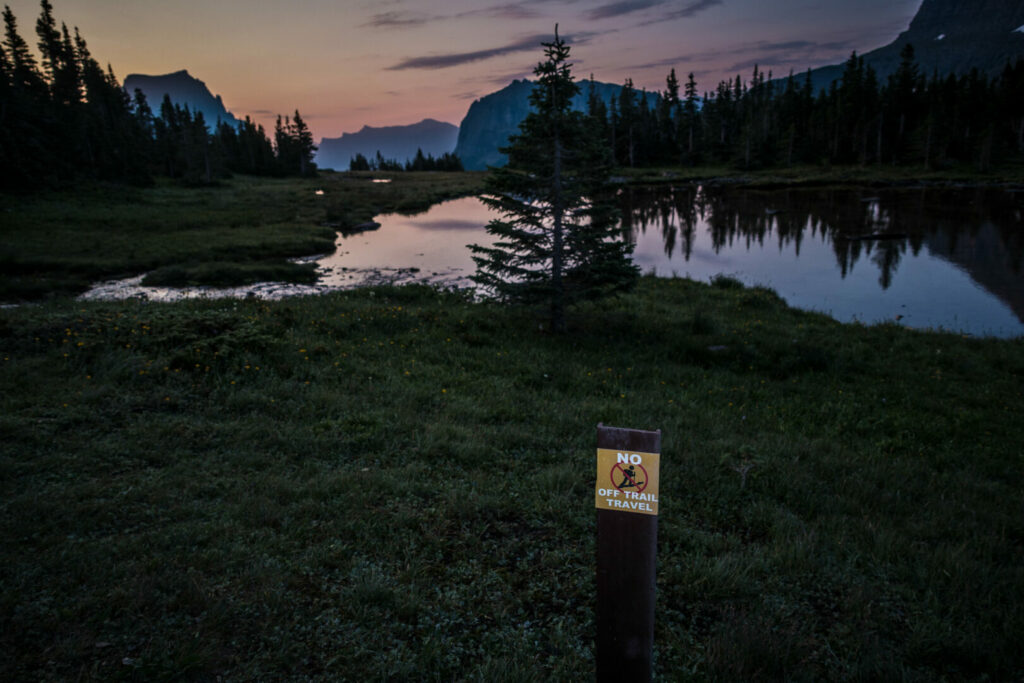
Visitors Getting Too Close to Wildlife
Many visitors to national parks often forget that the animals they see are wild. Driving through a national park is not like going through a zoo.
There are no barriers or fences preventing interactions between wildlife and guests. As a result, it’s up to visitors to maintain a safe distance from any wildlife and avoid any interactions.
Every time we turn around, there’s a news story about a negative incident between a national park visitor and wildlife. Visitors should give them space no matter how friendly or playful bison, moose, bears, or any other wildlife may look.
Failing to do so puts you and the animals in danger. Not to mention, visitors caught intentionally approaching wildlife can face stiff fines and bans from national park units.
Vandalism/Trash
Officials expect visitors to practice leave-no-trace practices when visiting the parks. This means disposing of trash and ensuring the area stays clean.
Sites should be in the same condition when you leave as when you arrived. It’s a relatively simple expectation, but people aren’t following it.
Joshua Tree National Park is one park that has seen vandalism and trash for years. The park officials have reported guests driving over trees, toppling gates, and illegally camping. If that’s not enough, people left graffiti on rocks, and officials discovered human waste around the park.
While rangers and officials do their best to protect the parks, they can’t be everywhere at once. Visitors bear tremendous responsibility when protecting the lands.
Keep in Mind: Joshua Tree deserves visitors that care about picking up after themselves and are respectful campers. If that’s you, read our guide to Camping With Your RV in Joshua Tree National Park!
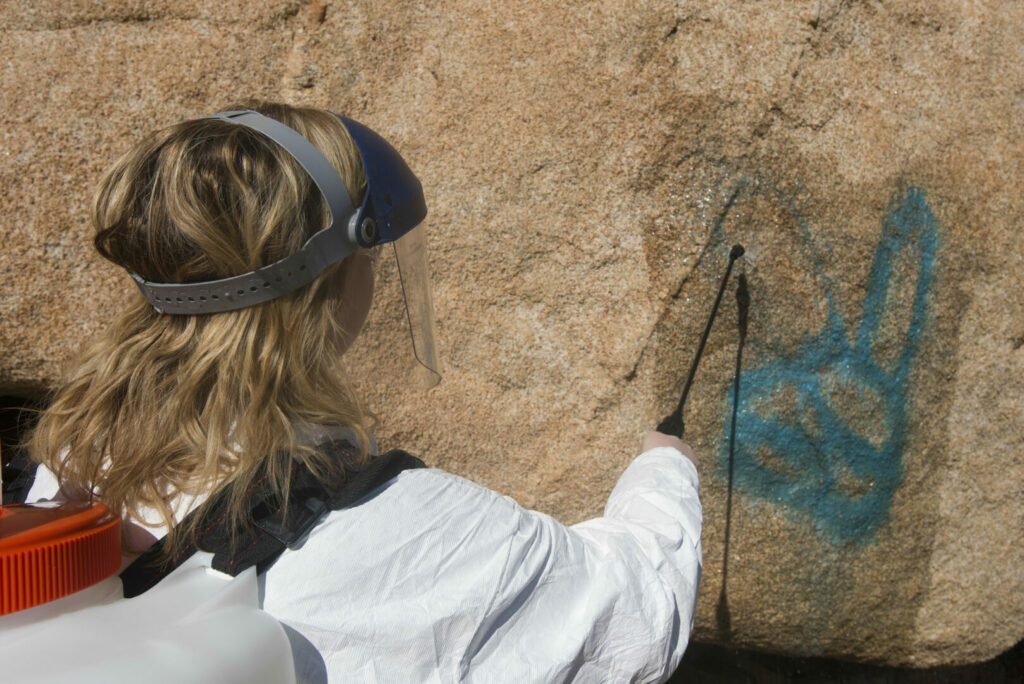
Climate Change
NPS officials also cite that climate change harms many national parks. Yellowstone, Glacier, Yosemite, and Joshua Tree are only a few of the parks experiencing significant changes as a result of the changes in the climate.
Recently, Yellowstone National park and the surrounding area experienced unprecedented flooding that wiped out access to a large chunk of the park.
Some experts believe the glaciers at Glacier National Park could melt by 2030 if things don’t change.
What Is the National Park Service Doing to Help?
The National Park Service isn’t sitting on its hands; it is taking action. Its job is to protect the federal lands, and that’s what the rangers are doing.
They’ve taken steps in several ways to help protect the national parks and keep them alive and well.
Advanced Reservation Systems
Instead of being a free-for-all when visiting the national parks, many locations are instituting advanced reservation systems. These systems require guests to purchase timed reservations to access the park or portions of the park.
Acadia National Park has a timed reservation system for those wanting to drive to the top of Cadillac Mountain.
However, Utah’s Arches National Park requires a timed reservation for any guests wishing to drive through the entrance to the park.
If you’re planning to visit any national parks soon, you can’t afford to wing it. You may discover you can’t even enter the park and that you’ve wasted time and gas on your trip.
Closing Areas Most Affected
One of the easiest ways for NPS to deal with issues is to close off areas impacted the most.
Officials at Joshua Tree National Park closed a portion of the park after incidents in 2019 during the government shutdown. Officials needed time to clean and restore the area before they felt comfortable allowing guests to return to the site.
The more incidents of destruction and vandalism we see in the national parks, the more this will become the norm.
Park officials take their duties seriously and won’t hesitate to shut down areas that need to heal.
Pro Tip: Do you have a national parks pass? If not, You’re Wasting Money not having one!
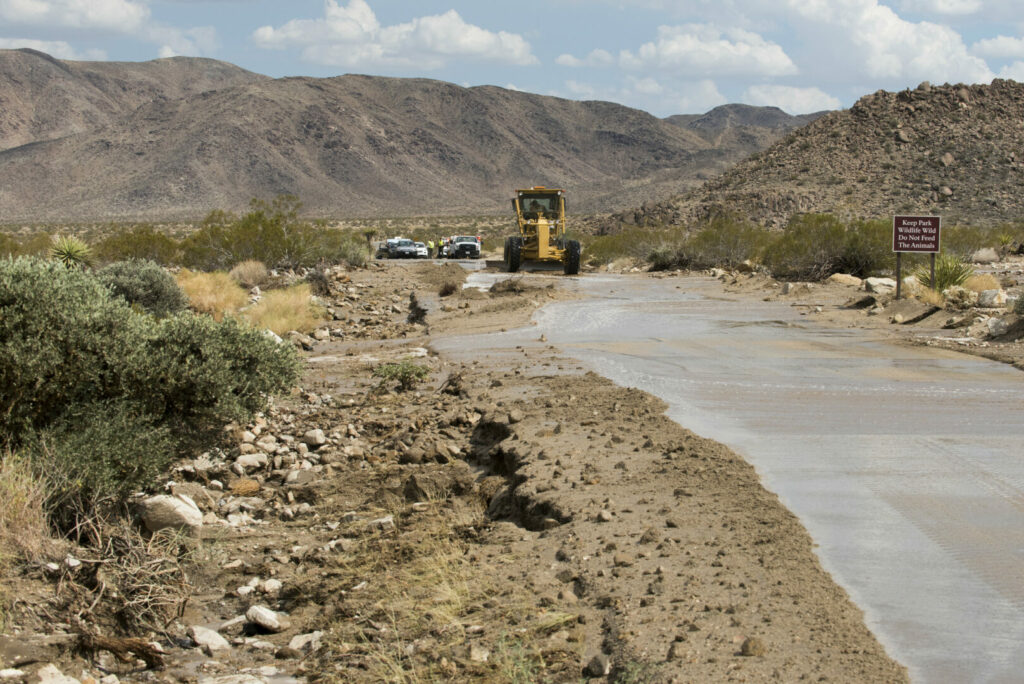
Increased Restrictions
Restrictions have been a buzzword for the past couple of years; however, they’re nothing new to the NPS.
Park officials often create restrictions to protect the health and longevity of the land and its resources.
They can also limit the number of visitors to an area. This could be through the timed reservation system or by requiring additional permits with a lottery system.
Increased restrictions make it more challenging for everyone to enjoy the park. However, they’re highly effective ways for park officials to protect the land.
We hate to see restrictions, but we understand why park officials often have no other choice.
Resist-Accept-Direct Plan
The National Park Service and several other federal agencies recently worked together to create the Resist-Accept-Direct Plan.
This is a comprehensive response plan when officials identify situations that could cause “rapid, irreversible ecological change.” This gives officials a framework to handle problems quickly, effectively, and positively.
The plan is a sign of the forward-thinking National Park Service wanting to help stop the effects of climate change on the park systems.
They’re not only worried about today’s national parks, but the national parks 50 to 100+ years from now. If their plan works, generations will enjoy the beauty and wonder of the national park units.
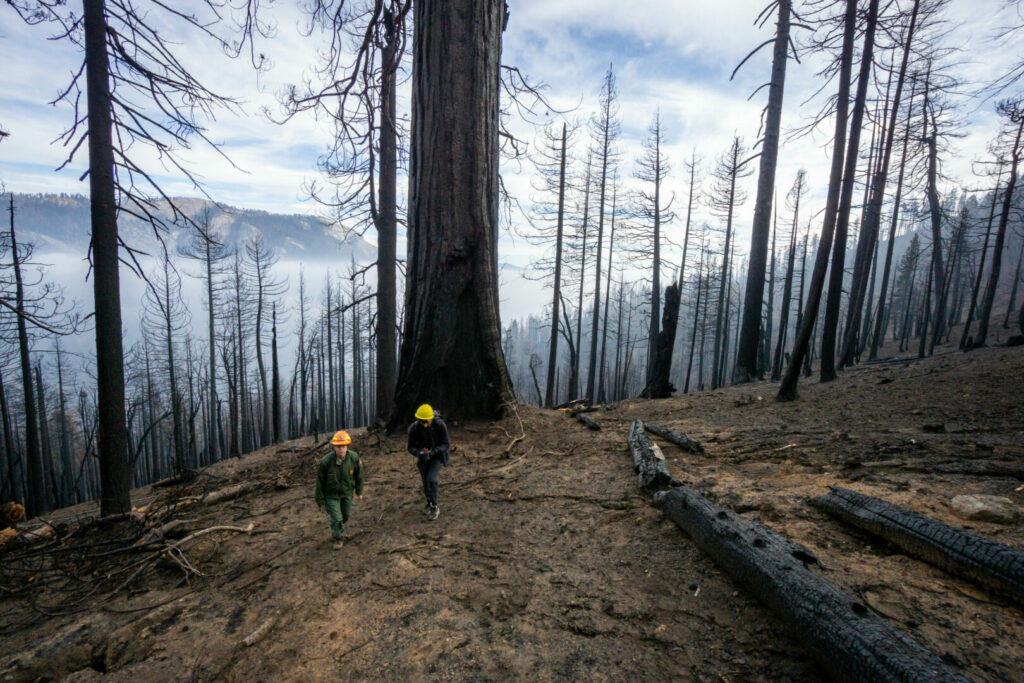
Do Your Part to Protect the National Parks
The national parks are public lands, meaning we all must carry the burden of caring for them. Visitors to the parks must do their part to clean up after themselves and others to keep the parks clean.
Guests should report people violating rules and restrictions to protect wildlife and vegetation.
A lack of attention and action got many of our parks into their current conditions. However, we don’t have to sit back and let the destruction continue. Step up and do your part to protect our national parks!
Are you visiting a national park this year? Let us know in the comments!




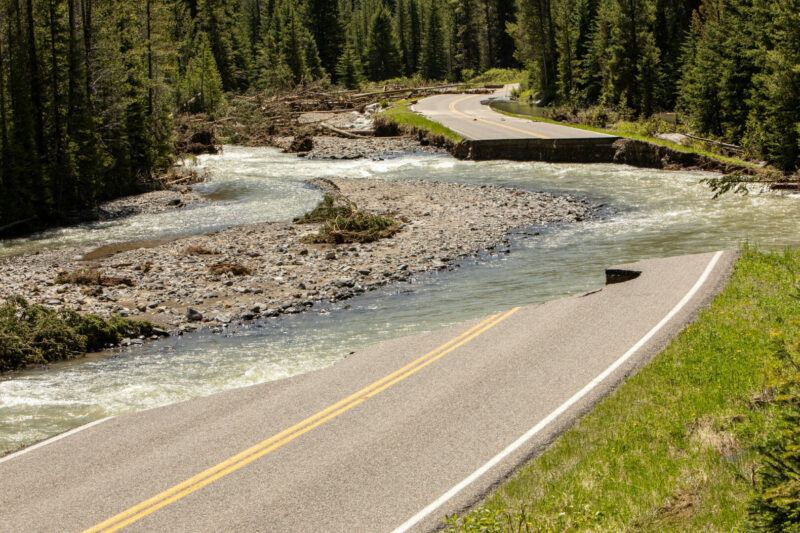


The time permit system for long distance travelers just does not work. For Rocky Mountain National Park, you have to get a reservation as soon as they make them available, or you won’t get one. They open reservations 1 month in advance and it you are not sitting at your computer exactly when they become available, they are sold out within 15 minutes. That means you have to guess at what kind of weather you might encounter in a month, if you are still able to hike on the day you picked and so on. With our trip this year it spilled over into Aug, so I had to wait another month to get more reservations. Once you get to the park, they are not flexible at all with the reservations you have. In July 2022, we attempted to enter the park at 5:45 with a 6:00 AM reservation. There was no one at the entry point and they refused to let us in. We were told to leave and come back in 15 minutes. If you arrive before 9:00 AM, you can get into the park without a time permit (for some locations). However, if you drive Trail Ridge Road to Grand Lake, say to eat lunch and attempt to return back to Estes Park, sorry, you cannot re-enter the park. They will make you wait until after 3:00 PM when a pass is no longer needed for entry. Or you can return to Estes Park via Denver. We were in RMNP for 9 days and I can tell you the permit system does not work for those of us who tow our TT 1,500 miles to visit this park. We have been coming to this park for 40+ years and are now considering not coming back due to these out-of-control restrictions.